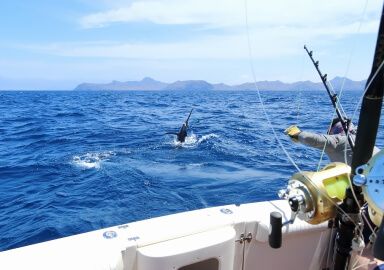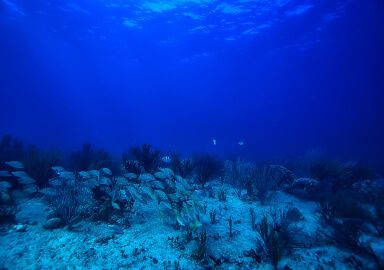Dolphin (Mahi Mahi)
The Dolphinfish, Mahi Mahi, or Dorado is one of the most beautiful, fastest growing and still fairly abundant sport and commercial fish species in the world.
View 237 listings
237
listings
–
price starting from
34
countries
Where and When?
As the Dolphinfish is found throughout the warmer oceans and is one of the most popular sport fish, game fisheries have been developed in many places where it may be caught. In the USA there are good localities in and around Florida and Texas. Around the Caribbean Sea there are excellent spots while in South America they are often caught in countries like Brazil. Parts of the east and west coasts of Africa, particularly in Kenya, Tanzania and South Africa, provide good Dolphin fishing bases, while they are also often caught in localities in Australia and the Far East. As with most warm water species, summer is usually the time of best catches but, as the species is found in the northern and southern hemispheres, the well-resourced enthusiast can usually find a productive area in which to fish. Mahi Mahi are mostly caught from boats and so good planning is usually essential to organize a successful fishing trip.
About Dolphin (Mahi Mahi)
Coryphaena hippurus, a.k.a. Dolphin, a.k.a. Mahi-Mahi, a.k.a Dorado are found in tropical, sub-tropical and even some temperate areas of the Indian, Atlantic and Pacific oceans. They are often found close inshore, particularly as juveniles, but can also be found far from land. It is an amazing fish as it lives for a maximum of about four years but has been reported to attain 40 kilograms. The species can however, begin spawning at about 20 cm, spawn repeatedly each year and attain ten kilograms in six months in aquaria. Its colouring is spectacular with bright iridescent blues, greens and yellows when alive, but quickly dulls after death. It is one of the few fish that display sexual dimorphism, meaning that the sexes are easily distinguished with the male having a prominent “forehead” extending well in front of its mouth. The Dolphin are found close inshore, often around reefs, but they are best known for being closely associated with floating ocean debris of any kind. From planktonic stages to adults they are drawn to and stay with even the simplest and most unnatural floating items. They have very large eyes and are mostly “optic” feeders. At a time when many fish populations are struggling this species is still rated as “least concern” by fishing authorities.
How to Catch?
The Dophinfish are an extremely fast moving species that swims mostly in the top few meters of the water column. This means that to catch a fish you often need to be casting and retrieving suitable baits or lures rapidly near the surface to target free swimming individuals. Mahi Mahi, however, seem to be inexorably drawn to underwater or floating debris as well as natural or man-made “reefs”. For catching these fish the debris or reef should be approached carefully and lures cast towards them as soon as possible but fish can also be caught fairly deep below and around objects. Fish aggregating devices (FADS), although illegal in some areas, can be extremely effective in concentrating this species. While live bait can produce good results, most fish are caught on artificial lures. Fly fishing for the Dolphinfish is becoming popular and hooking this species on fly around flotsam or under feeding birds can have spectacular results ending in lifelong memories.







